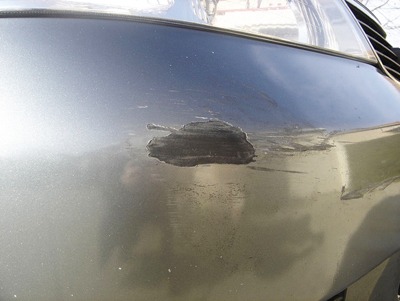Engineerblogger
Feb 3, 2012
Stephanie Baron and Gerard Liraut of Renault presented a paper at the 2011 VDI plastics in automotive conference on characterising new materials and coatings for clean and easy-to-maintain surfaces. They addressed issues of maintaining high gloss, avoiding dust attraction and ongoing concerns over visibility of scratches on through-coloured automotive interior mouldings.
Baron pointed out that while PP compounds are considered materials with good cost performance and recyclability, talc fillers in PP are still thought to cause scratches to become visible, with white marks that are especially noticable on dark mouldings.
"Some competitors use materials improved by sliding agents," Baron said. "But a known inconvenience is that this kind of agent with a base of amides exudes with heat and creates a sticky effect." Baron did, however, admit that some improved additives are available that are said to have resolved this problem of migration to the surface.
Similarly with dust attraction, some of Renault's competitors are using additives with anti-static action. But a sticky effect is generated here, too, as UV agents and anti-static agents interact in the presence of air.
And in order to have permanent anti-dust effects, the concentration of additive needed is so high that "the prices increase and mechanical properties decline", Baron complained. She pointed out that Asian automotive OEMs have found an easy solution by making their interiors in light colours, so that the dust - or scratches for that matter - is not so visible.
Renault, on the other hand, has tested permanent anti-static additives, only to find that the plastics tested were just as dirty as other parts after nine months. A more durable anti-static effect or one that could be reactivated would therefore be of interest to Renault.
Looking ahead, Renault seeks to make interior plastic parts with anti-adherent hydrophobic and oleophobic surfaces, to limit soiling. Otherwise, adapting the architecture of the cockpit for easy, simple and efficient cleaning would be at least "an important preliminary step", Baron concluded.
One of the latest measures to address scratch visibility has been applied by Styron for the UV-stable PP-based Inspire compounds used on the new Range Rover Evoque. The compounds are used in interior parts such as the shrouds around the steering column, centre console cladding and trim panels in the rear load space compartment.
Source: European Plastics News
Friday, February 3, 2012
Scratching away at automotive surfaces: Characterising new materials and coatings for clean and easy-to-maintain surfaces
Labels:
Automotive,
Europe,
Materials,
Science
Subscribe to:
Post Comments (Atom)





.jpg)


No comments:
Post a Comment